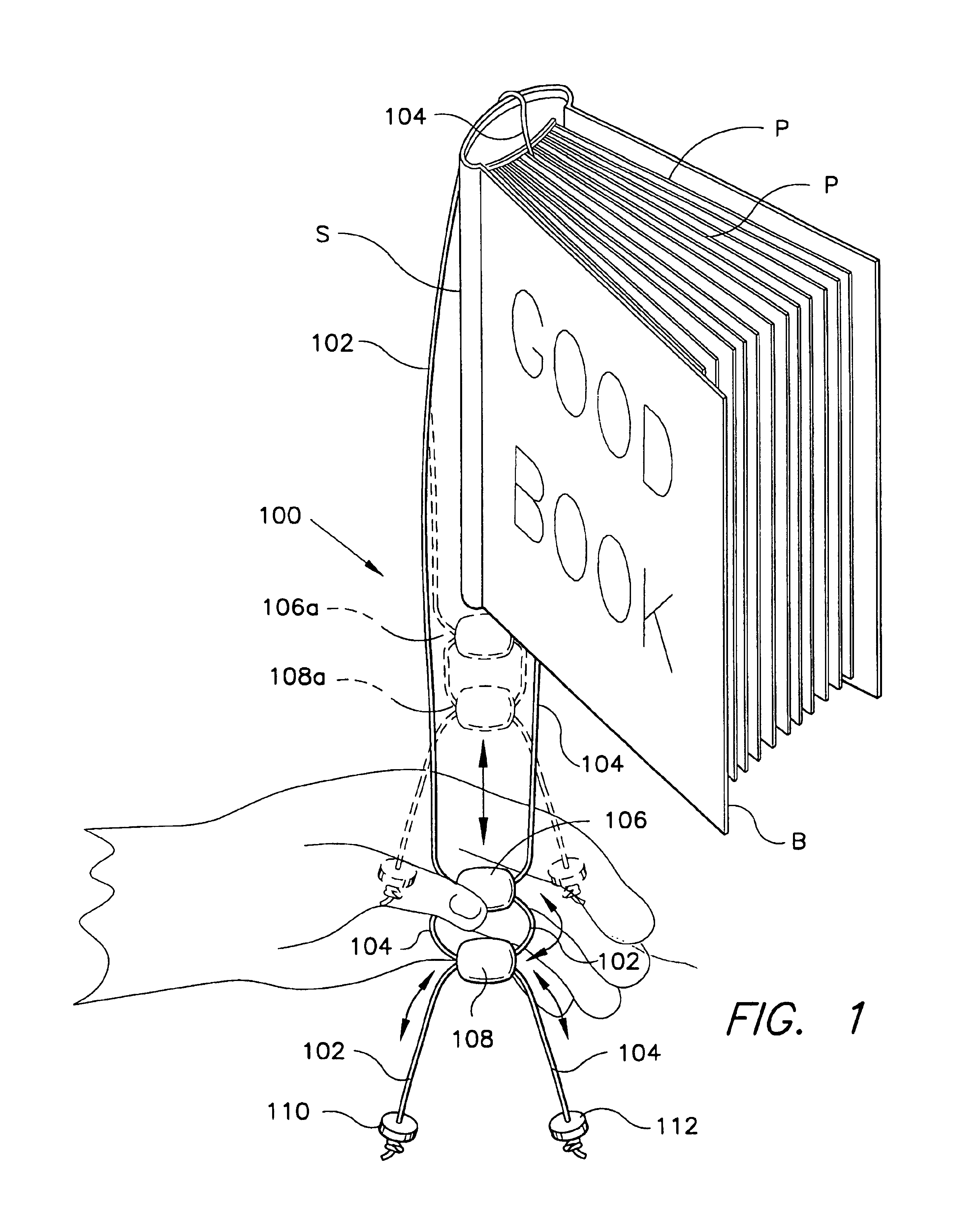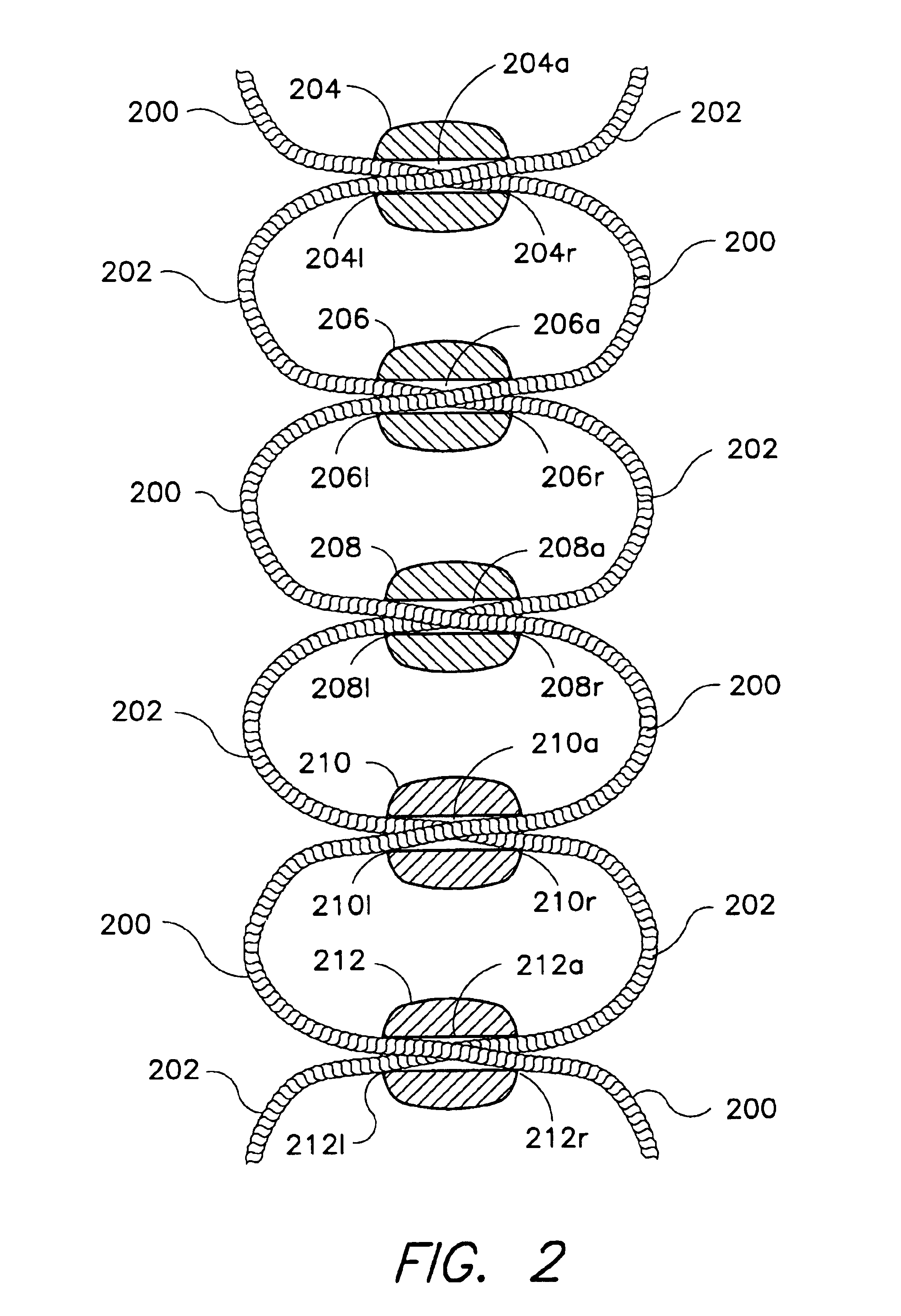Adjustable bookmark
a bookmark and adjustment technology, applied in the field of place markers and bookmarks, can solve the problems of losing one's place in a book, a book magazine, or other reading material, and simple bookmarks are certainly cost effective, and achieve good frictional fit for holding position
- Summary
- Abstract
- Description
- Claims
- Application Information
AI Technical Summary
Benefits of technology
Problems solved by technology
Method used
Image
Examples
Embodiment Construction
The present invention comprises various embodiments of an adjustable bookmark, essentially comprising a closed loop of material having at least one adjuster bead or device strung thereon. The two strands forming the two sides of the loop pass through the bead(s) from opposite directions, crossing one another within the single passage through the bead. The resulting friction provides good security for the device when adjusted to fit a book.
FIG. 1 illustrates the structure and function of a basic first embodiment 100 of the present invention. The bookmark 100 comprises a closed loop of a single strand of thin, flexible material having opposite first and second portions, respectively 102 and 104, forming the opposite sides of the loop. The lower end of the loop in FIG. 1 is determined by a pair of adjuster beads, respectively 106 and 108. A stop or retainer, respectively 110 and 112, may be affixed to the end of each strand 102 and 104. The two portions 102 and 104 of the loop pass lat...
PUM
 Login to View More
Login to View More Abstract
Description
Claims
Application Information
 Login to View More
Login to View More - R&D
- Intellectual Property
- Life Sciences
- Materials
- Tech Scout
- Unparalleled Data Quality
- Higher Quality Content
- 60% Fewer Hallucinations
Browse by: Latest US Patents, China's latest patents, Technical Efficacy Thesaurus, Application Domain, Technology Topic, Popular Technical Reports.
© 2025 PatSnap. All rights reserved.Legal|Privacy policy|Modern Slavery Act Transparency Statement|Sitemap|About US| Contact US: help@patsnap.com



